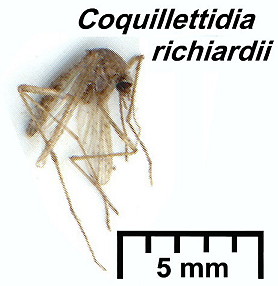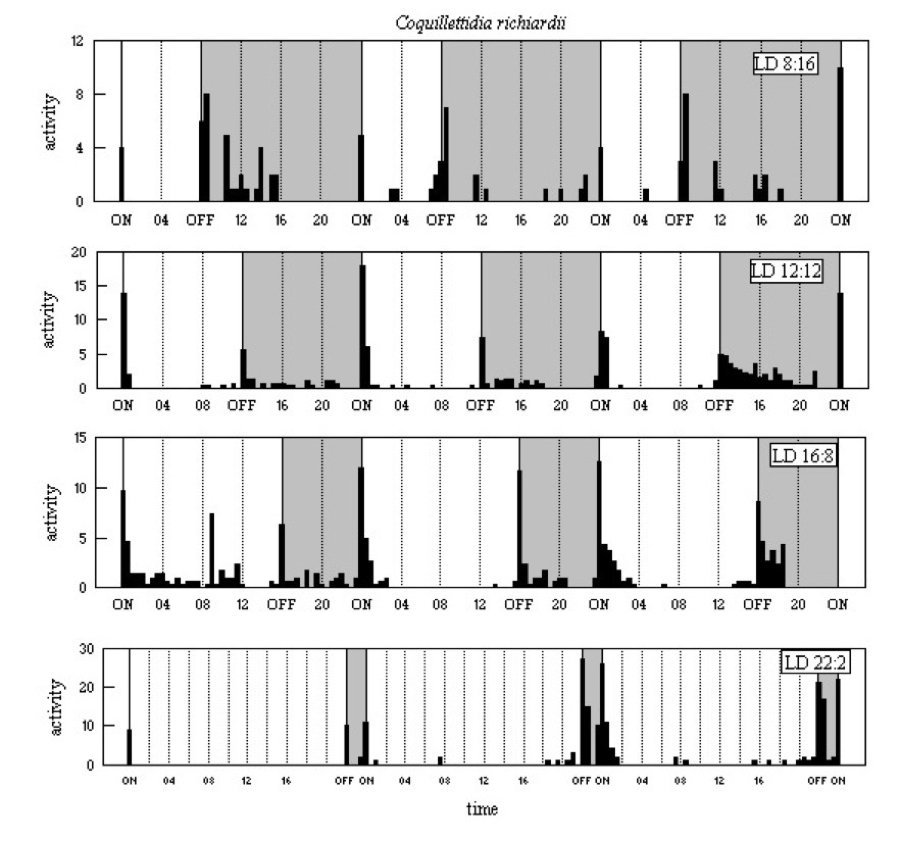Biological Clocks in Mosquitoes
|
 Stone et al. (1959) give the distribution as
Europe, east to western Siberia and Syria.. Natvig (1948) gives a
northern limit of about 60°N (in Sweden, Finland and the former USSR)
and a southern limit of about 40°N (in Portugal and Macedonia) to 32°N
(in Palestine). Adults may be found in Britain between May and
September, with overwintering as larvae (Marshall, 1938). Covell &
Shute (1954) described the female as being very sensitive to light,
remaining hidden in long grass until dusk. They may enter houses to
feed but leave again before dawn. The British Museum (Natural
History), Economic Series No 4A (1958), reported that there is only
one annual brood, the adults appearing from May to June. Snow (1990)
supports this for Britain and describes it as univoltine, overwintering
as larvae and pupating in Spring, with adults appearing in May and
recorded activity as late as September.
Stone et al. (1959) give the distribution as
Europe, east to western Siberia and Syria.. Natvig (1948) gives a
northern limit of about 60°N (in Sweden, Finland and the former USSR)
and a southern limit of about 40°N (in Portugal and Macedonia) to 32°N
(in Palestine). Adults may be found in Britain between May and
September, with overwintering as larvae (Marshall, 1938). Covell &
Shute (1954) described the female as being very sensitive to light,
remaining hidden in long grass until dusk. They may enter houses to
feed but leave again before dawn. The British Museum (Natural
History), Economic Series No 4A (1958), reported that there is only
one annual brood, the adults appearing from May to June. Snow (1990)
supports this for Britain and describes it as univoltine, overwintering
as larvae and pupating in Spring, with adults appearing in May and
recorded activity as late as September.
Experimental material
Adult females were readily trapped attacking man at Arne Wood, Dorset,
England (50°41'N) on the evening of 25 July 1968 (sunrise 0516h and
sunset 2056h BST, daylength 15h40m) and these were used in experiments
from 29 July. Recordings were made with light-off at 2100h BST.
Experimental regimes
LD 8:16, one female, recorded for days three to six.
LD 12:12, three females, recorded for days three to six.
LD 16:8, three females, recorded for days three to six.
LD 22:2, one female, recorded for days three to six.
Results and discussion
The activity patterns are shown in Figure A18 below. It shows bimodal
activity, with E and M in all but LD 22:2, in which
only M remains, being broader than in the shorter regimes.
Monchadskiļ (1946) found that the species was abundant and aggressive in Central Asia (36-38°N). Adults of the overwintering generation appeared in May and those of the other two generations in July and August respectively. The daily rhythm of activity depended to a considerable extent on temperature but also varied with season and distance from day-time shelters. In Summer mass attacks occurred after sunset, peaking between 2130-2300h, and after sunrise, 0800-0900h. With the onset of cold nights in Autumn, evening activity began and finished earlier, and the morning attack began later.
Figure A18

|
©1998, 2010 - Brian Taylor CBiol FSB FRES 11, Grazingfield, Wilford, Nottingham, NG11 7FN, U.K. Comments to dr.b.taylor@ntlworld.com |
href="\crhtml\coqric.htm"